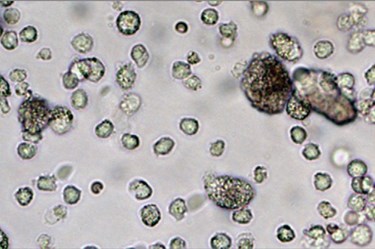Injectable 3D Scaffolds Could Help Fight Cancer
By Chuck Seegert, Ph.D.

Using an injectable scaffold that self-assembles in vivo, researchers from Harvard University have developed a new form of immunotherapy. The biomaterial can be loaded with drugs or other bioactive stimulants to induce a desired immune response, which could potentially be used to fight cancer or infectious diseases, like HIV.
Tumors often survive and thrive in a person’s body by evading the immune system. Past attempts to induce the immune system to attack cancer using a technique known as immunotherapy have been unsuccessful. Finding a way of directing an immune response toward the deadly cancer cells without surgical intervention would be a major step forward in disease treatment, and it would allow the body to conduct its own defense.
In an effort to accomplish this goal, researchers from Harvard’s Wyss Institute for Biologically Inspired Engineering and Harvard’s School of Engineering and Applied Sciences have developed a promising new approach, according to a recent press release. Using mesoporous silica rods (MSRs), the researchers developed a new treatment that takes the microscale structures and injects them through a needle just below the surface of the skin. The MSRs then self-assemble into a random 3D scaffold in a way that is similar to pouring matches onto a table.
Once placed below the skin, the self-assembling scaffold forms macroporous voids between the MSRs, according to a recent study published by the team in Nature Biotechnology. These macroporous spaces recruit host dendritic cells, a type of immune cell responsible for identifying harmful materials, until eventually the scaffold is filled. After recruitment in the scaffold, the dendritic cells were shown to localize to the lymph nodes, where they can mount their defense. In addition to dendritic cells that affect the lymph nodes, the MSR scaffold appeared to enhance systemic T-cell responses.
During production, the MSRs are fabricated with small nanopores that can be filled with different bioactive agents like cytokines, oligonucleotides, or drugs, according to the press release. Including these types of chemical agents may allow the MSRs to be tailored to specific infections or diseases.
"By tuning the surface properties and pore size of the MSRs, and therefore controlling the introduction and release of various proteins and drugs, we can manipulate the immune system to treat multiple diseases," said Harvard graduate student and co-author of the paper Aileen Li in the press release.
The value of injectable scaffolds has been realized in other areas of biomedical research. For example, an orthopedic scaffold that can be injected could help with the healing of bones without open surgery.
Image Credit: Wyss Institute at Harvard University
